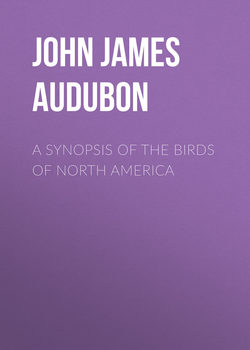Читать книгу A Synopsis of the Birds of North America - John James Audubon - Страница 20
FAMILY III. STRIGINÆ. OWLS
GENUS V. OTUS, Cuv. EARED-OWL
ОглавлениеBill short, stout, broader than high at the base, compressed toward the end; upper mandible with its dorsal line slightly curved from the base, toward the end decurved, the ridge broad at the base, narrowed anteriorly, the sides convex toward the tip, which is acute, and descends obliquely; lower mandible straight, with the dorsal line very short and slightly convex, the back and sides convex, the edges toward the end decurved, and with a slight sinus on each side, the tip obliquely truncate. Nostrils large, oblique, oblong. Conch of extreme size; extending from the level of the forehead over the eye to the chin in a semilunar form, with an anterior semicircular flap in its whole length, the aperture large, of a rhomboidal form. Feet of moderate length, and stout; tarsi short, feathered, as are the toes; the first shortest, the second and fourth nearly equal; claws long, curved in the fourth of a circle, extremely acute, the first and second rounded beneath. Plumage extremely soft and downy, facial disks complete, ruff distinct. Two small tufts of elongated feathers on the head. Wings long and broad; the second quill longest; the outer in its whole length, the second toward the end, and the first alular feather, with the filaments disunited and recurved at the ends. Tail rather short, a little rounded.
37. 1. Otus vulgaris, Fleming. Common Eared-Owl. – Long-eared Owl
Tufts elongated; general colour of plumage buff, mottled and spotted with brown and greyish-white; dirty whitish anteriorly, with the tips black, posteriorly reddish-white; ruff mottled with red and black; upper part of head minutely mottled with whitish, brownish-black, and light red; the tufts light reddish toward the base, brownish-black in the centre toward the end, the inner edge white, dotted with dark brown; upper parts buff, variegated with brown and whitish-grey, minutely mottled or undulatingly barred; first row of coverts tipped with white; quills and scapulars pale grey barred with dark brown, the primaries buff toward the base externally. Tail with ten bars on the middle and eight on the outer feathers; lower parts with more buff and fewer spots than the upper, each feather with a long dark brown streak, and several irregular transverse bars; legs and toes pure buff.
Male, 141/2, 38. Female, 16, 40.
From Maryland eastward, and Kentucky westward to the Missouri. Rather rare. Resident.
Long-eared Owl, Strix Otus, Wils. Amer. Orn. v. vi. p. 52.
Strix Otus, Bonap. Syn. p. 37.
Long-eared Owl, Strix Otus, Nutt. Man. v. i. p. 130.
Long-eared Owl, Strix Otus, Aud. Orn. Biog. v. iv. p. 573.
38. 2. Otus brachyotus, Linn. Short-tufted Eared-Owl. – Short-Eared Owl
Tufts inconspicuous, general colour of plumage buff variegated with dark brown; eye surrounded by a ring of brownish-black, much broader behind; anterior half of disk white, with the tips black, posterior yellowish; anterior auricular ruff white, posterior yellowish, each feather with an oblong dark brown spot; upper parts buff, longitudinally streaked with dark brown; scapulars and wing-coverts spotted and banded in large patches, many with a large yellowish-white spot on the outer web near the end; quills buff, with two or three dark brown bands; tail similar, with five broad dark bands, the tip yellowish-white; on the middle feathers, the light-coloured spaces have a brown central patch; lower parts pale buff, whitish behind, the neck with oblong, the breast and sides with linear dark brown streaks; chin, feet, abdomen, and lower tail-coverts unspotted.
Male, 15, 40. Female, 17, 45.
From Texas eastward. Columbia River. Common. Migratory.
Short-eared Owl, Strix brachyotos, Wils. Amer. Orn. v. iv. p. 64.
Strix brachyotos, Bonap. Syn. p. 37.
Short-eared Owl, Strix brachyotos, Nutt. Man. v. i. p. 132.
Short-eared Owl, Strix brachyotos, Aud. Orn. Biog. v. v. p. 273.
